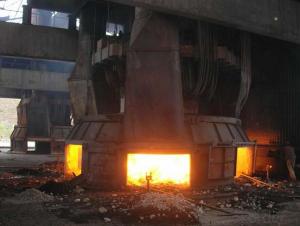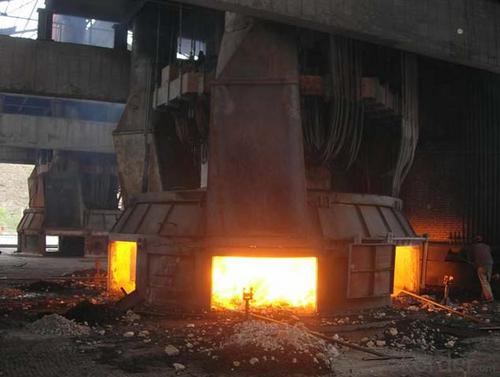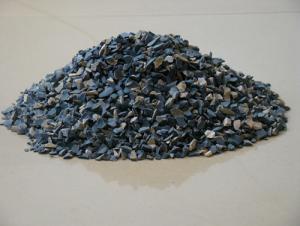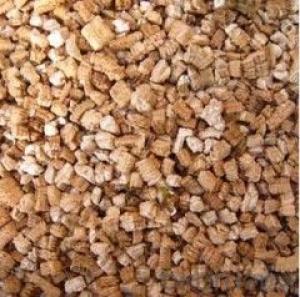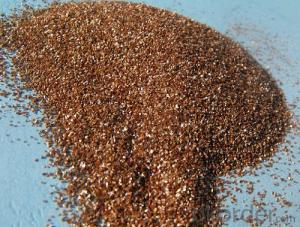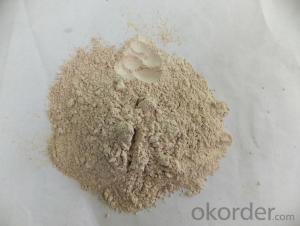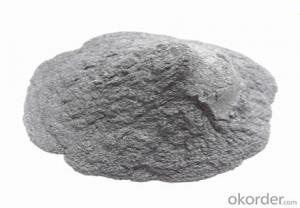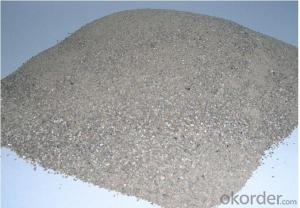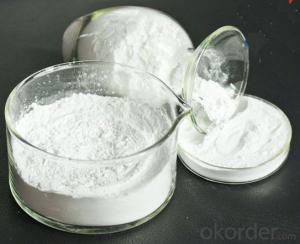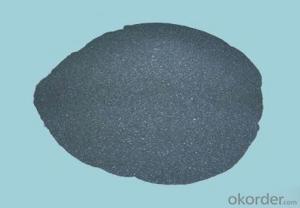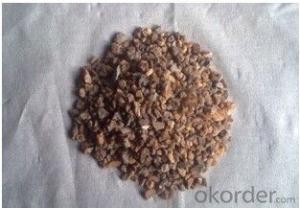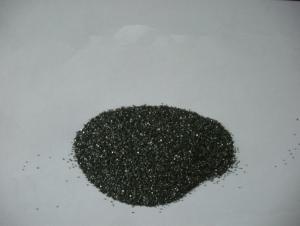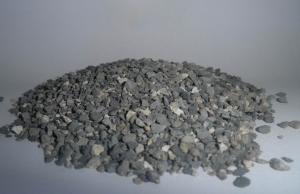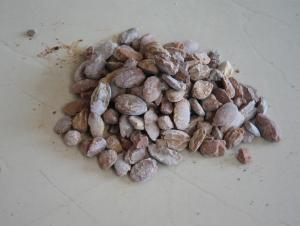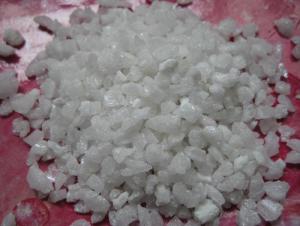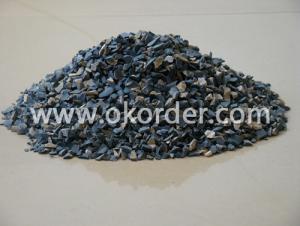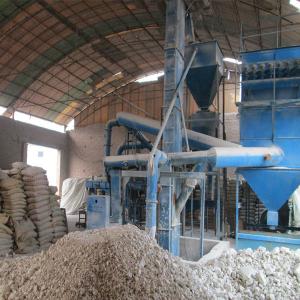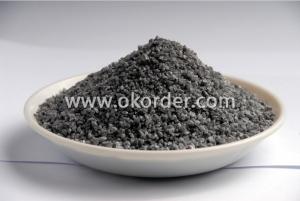Raw Materials for Refractory:Silicon-Manganese Alloy
- Loading Port:
- Tianjin
- Payment Terms:
- TT OR LC
- Min Order Qty:
- 20 m.t.
- Supply Capability:
- 1000 m.t./month
OKorder Service Pledge
OKorder Financial Service
You Might Also Like
Main application of Silicon-manganese alloy
Silicon-manganese is a kind of alloy that consists of silicon, manganese, iron and few carbon or some other elements, it's a ferrous alloy which is used widely and high production capacity. Its consumption is in second of ferroalloy production. The manganese and silicon in silicon-manganese have strong oxygen affinity, using the silicon-manganese in smelting steel, will produce MnSiO3 and MnSiO4, their melting point are 12700C and 1327 0C respectively, which has the advantages of low melting point, big granule, easy to float up, good deoxidizing effect and so on.
In the same condition, using manganese or silicon to deoxidize separately, the burn out rate are 46% and 37%, but it is only 29% if using manganese alloy to deoxidize. So, it is used widely to smelting steel and its output increases faster than ferroalloy's, so has become an indispensable composite deoxidizing and alloy additives in steel industry. The silicon-manganese which contains carbon below 1.9% still is used to produce medium/low-carbon ferromanganese and semi-finished products of electro silicothermic process manganese metal.
In the ferroalloy production enterprises, they called the silicon-manganese for steelmaking as commercial silicon-manganese, the silicon-manganese for medium/low-carbon ferromanganese as self-use silicon-manganese and the silicon-manganese for making manganese metal as high silicon-manganese.
Grade | Chemical Composition (%) | ||||||
| Mn | Si | C | P | S | |||
| I | II | III | |||||
| ≤ | |||||||
| FeMn64Si27 | 60.0~67.0 | 25.0~28.0 | 0.5 | 0.1 | 0.15 | 0.25 | 0.04 |
| FeMn67Si23 | 63.0~70.0 | 22.0~25.0 | 0.7 | 0.1 | 0.15 | 0.25 | 0.04 |
| FeMn68Si22 | 65.0~72.0 | 20.0~23.0 | 1.2 | 0.1 | 0.15 | 0.25 | 0.04 |
| FeMn64Si23 | 60.0~67.0 | 20.0~25.0 | 1.2 | 0.1 | 0.15 | 0.25 | 0.04 |
| FeMn68Si18 | 65.0~72.0 | 17.0~22.0 | 1.8 | 0.1 | 0.15 | 0.25 | 0.04 |
| FeMn64Si18 | 60.0~67.0 | 17.0~20.0 | 1.8 | 0.1 | 0.15 | 0.25 | 0.04 |
| FeMn68Si16 | 65.0~72.0 | 14.0~17.0 | 2.5 | 0.1 | 0.15 | 0.25 | 0.04 |
| FeMn64Si16 | 60.0~67.0 | 14.0~17.0 | 2.5 | 0.2 | 0.25 | 0.3 | 0.05 |
- Q: what is the grading standards of external wall thermal insulation materials?
- What is the grading standards of external wall thermal insulation materials? summarizing the three versions of GB8624 (1997,2006,2011) external wall insulation fire rating can be basically divided into: A1, A2, B1, B2, B3 and other levels. the dividing is based on many technical indicators. It takes time to explain for It is professional and technical. For details, please contact Qingdao Shan Textile Instrument. they specialized in external wall insulation fire rating tester.
- Q: Refractory material, refractory brick
- High alumina brick is commonly used in high aluminum, LZ-75, LZ-65 and LZ-55, as well as high alumina brick for blast furnace, high alumina brick for hot blast furnace, and low creep high alumina brick
- Q: Which are fireproofing external wall materials?
- 1. Acording to national standard GB8624-97, the combustion performance of construction materials are classified as: Grade-A: incombustible building material: Grade-A WW thermal insulation material which hardly burns. Grade-B1: nonflammable building material: nonflammable building material has good flame resistance. It is difficult to burn or spread in the air or at high temperature. Grade-B1: nonflammable building material: nonflammable building material has good flame resistance. It is easy to burn in the air or at high temperature, thus spreading the fire, such as wooden column, timber roof truss, timber beam and wooden stairway. Grade-B3: inflammable building material. Without fire resistance, inflammable building material is easy to burn and thus cause a fire. 2. According to fireproofing performance, external wall thermal insulation materials can be classified as: 1. Thermal insulation material with Grade-A combustion performance: WW inorganic thermal insulation material, rock wool, glass wool, foam glass, foamed ceramics and foam cement. 2. Thermal insulation material with Grade-B1 combustion performance: XPS panel after special treatment/ PU, phenolic aldehyde, gelatine powder polyphenyl granule after special treatment. 3. Thermal insulation material with Grade-B2 combustion performance: EPS, XPS, PU, PE, ETC.
- Q: What needs to be noted when choosing and using blast furnace fireproof materials? Who knows?
- there are different temperatures in various parts of the blast furnace, thus using different types of refractory.
- Q: I would like to ask a friend that how much is the fire endurance of level A fireproofing glass?
- the fire endurance of fire window is: class A window is not less than 1.2 hours, class B window is not less than 0.9 hours, Class C window is not less than 0.6 hour. technical requirements: 1, materials and accessories (1) the window frame is made by a certain strength of steel frame or wooden frame which is sufficient to safeguard the integrity and stability. (2) steel frame and mound layer can select galvanized?steel?sheet or stainless steel plate. Its selection standards should be in line with the provisions of Article 5.1. in GB12955 "Steel Fireproof Door General Technical Condition" (3) the selection standards of wood frame and mound layer should be consistent with the provisions of Article 5.1.1. in GB14101 "General Technical Conditions of Wooden Fireproof Door" (4 ) the inner filling material of steel and wood frame should be non-combustible material. (5) fireproofing glass can choose the qualified products in fire resistance test and not affecting the fire windows. light transmittance of glass is not less than 75% of identical layers of ordinary plate glass. ( 6) a sealing material between the frame and the fireproofing glass should use the nonflammable material, it can play the role of fireproofing and smoke insulation in the fire disaster. I hope I can help you
- Q: What is the definition and classification of amorphous fire resistance materials?
- 9.8. brick made of refractory bone material and powder material can be used directly or after adding appropriate liquid formulation Refractory paint. Refractory slinging material 6. Prefabricated cubes, bonding agent or other additives. fire-resistance sparying material compround additives. Refractory pressed into the material, binder. Refractory ramming material 3, The material is a new fire proof material without calcination Heavy aggregate and lightweight aggregate: Inorganic binding agent and organic bond, its fire resistance is not less than 1580. Refractory castables 2 mouldable refractory Classification according to the type of bonding agent: 1. Classification according to refractory aggregate. According to the production and construction method, refractory mud or refractory mire, with a certain proportion of the mixture
- Q: What kind of material is refractory bauxite?
- Bauxite in refractory industry usually refers to the calcined bauxite ore which contains Al2O3 no less than 48%, while the content of Fe2O3 is rather low. Clinker of bauxite with high alumina is calcined bauxite. Tghe clinker is grey, light yellow and dark gray.
- Q: What kind of refractory decorative board has good quality?
- The unique design and personalized style of well-known brand "transit" rank highest in the field of domestic refractory slab. It is one of the largest manufacturers of high pressure decorating refractory slab in China. The production base covers an area of 40,000 square meters and the annual output is 4 million. It passes the test of Quality Supervision and Inspection Center of National Fire Protection Building Material and ISO9002 certification. The products pass international standards such as 4586, the United States NEMA and so on.
- Q: what needs to be noted when choosing and using blast furnace fireproof materials?
- it depends on the size of the blast furnace. below 200 cubic meters alumina bricks and carbon brickcan be used. 200 cubic meters and above are currently integrated bottom, not the same as the size of the cubic level, varying in the use of refactory. I hope my answers above are helpful to you and your ideal anwers.
- Q: Who knows how many poured refactory material are there?
- Casting refractory material, refractory material used often are AZS brick, corundum brick, direct bonding magnesia chrome brick, silicon carbide, silicon nitride bonded silicon carbide brick, nitrides, silicides, sulfide, boride, carbide and other non oxide refractory materials; calcium oxide, chromium oxide, aluminum oxide, magnesium oxide, beryllium oxide and other refractory materials.
Send your message to us
Raw Materials for Refractory:Silicon-Manganese Alloy
- Loading Port:
- Tianjin
- Payment Terms:
- TT OR LC
- Min Order Qty:
- 20 m.t.
- Supply Capability:
- 1000 m.t./month
OKorder Service Pledge
OKorder Financial Service
Similar products
Hot products
Hot Searches
Related keywords
